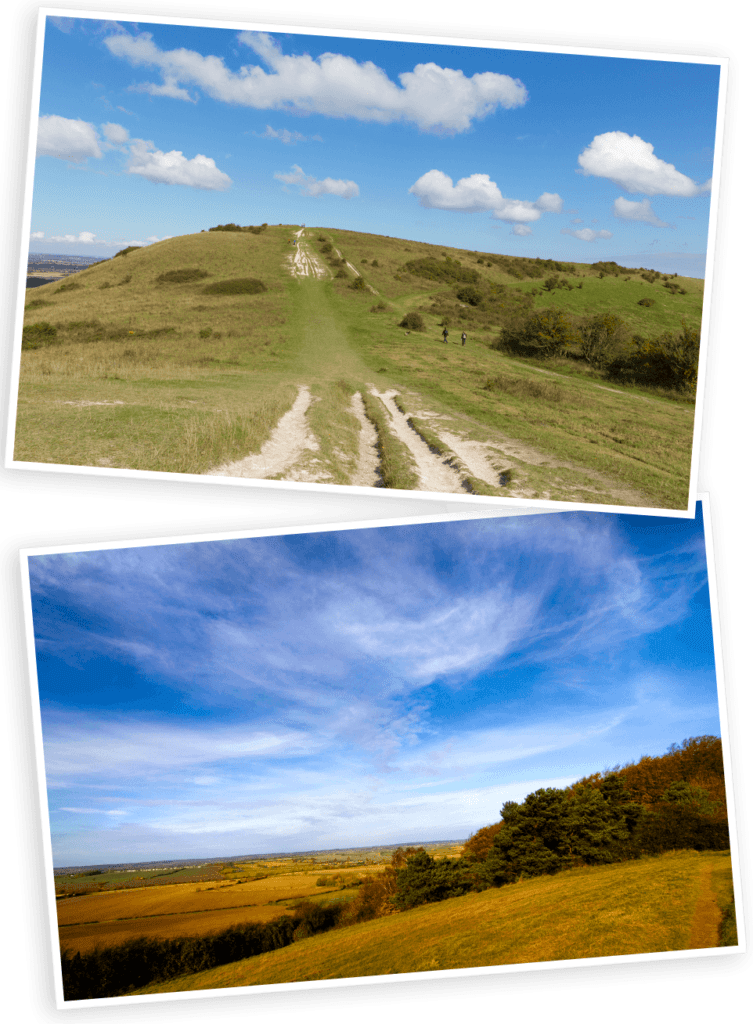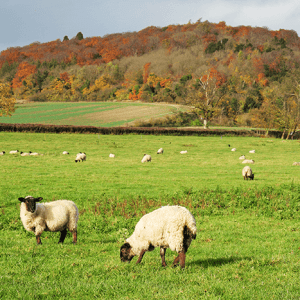Stirring our imagination about the past
We’re delighted to be supporting The Chilterns Conservation Board (CCB) in an exciting project which will engage and inspire communities to discover, conserve and enjoy the Iron Age hillforts of the Chilterns. The region has one of the largest collections of hillforts in the UK, yet many are poorly conserved, and little is known about them. We’re proud to be a partner in delivering such a worthwhile initiative.
What are hillforts and what’s their relevance to the Chilterns?
Hillforts are earthworks constructed in many parts of England by our Iron Age ancestors. They were mostly used as places of refuge in times of trouble. The larger ones are surrounded by one or more defensive walls, enclosing an inner area where communities could keep themselves, their possessions and their livestock safe. At present we’re aware of 22 sites in the Chilterns. Although a few are well known and well preserved, the sites as a whole haven’t been researched as thoroughly as collections of such monuments elsewhere. What’s more, we believe there may be others waiting to be discovered.
Why are hillforts so important?
They’re virtually the only major constructions that have survived from this ancient time. Because they’re earthworks, they now form part of our modern day Chiltern landscape, adding to its diversity and beauty. Cholesbury Camp, one of the Society’s own sites, is a particularly impressive example. In Victorian times it was planted with beech trees, the intention being to preserve the earthworks from erosion. The trees are now mature and have created a beautiful shaded area for walking & recreation, the appearance of which changes with the seasons.
Why do they need protecting?
These earthworks are at risk in much the same way as the Chilterns in general. Some are so well known, or so close to urban areas, that they need protection from being over-visited. Those that are not well known are at risk from indifference, neglect and unintentional vandalism.
What is the project aiming to achieve?
The project will survey and further research the known hillforts in addition to looking for previously undiscovered prehistoric features in densely wooded areas using LiDAR* technology. It also aims to improve the interpretation of the hillforts and their landscapes, encouraging people to visit and enjoy them responsibly. The project aims to bring the Iron Age world to life through programmes of events and it will also undertake practical conservation work on both known and newly identified sites.



Our plan
1. Discovery
Investigate known historical sites, find as yet undiscovered ones and collect archaeological data across the Chilterns for the use of communities and local societies in the future
2. Learning
Engage people of all ages in increasing our knowledge of the Iron Age history of the Chilterns and promote this through a range of educational activities and public events
3. Protection
Practical on-site conservation and restoration work on selected sites, promotion of Heritage Watch schemes and improving access on hard-to-reach sites
4. & hillforts will be…
Better managed, interpreted, explained, identified and understood – to inspire future generations to continue to conserve them.
1. Discovery
Investigate known historical sites, find as yet undiscovered ones and collect archaeological data across the Chilterns for the use of communities and local societies in the future
2. Learning
Engage people of all ages in increasing our knowledge of the Iron Age history of the Chilterns and promote this through a range of educational activities and public events
3. Protection
Practical on-site conservation and restoration work on selected sites, promotion of Heritage Watch schemes and improving access on hard-to-reach sites
4. & hillforts will be…
Better managed, interpreted, explained, identified and understood – to inspire future generations to continue to conserve them.
Get involved
There will be lots of opportunities to participate in this project for both adults and children. If you would like to keep in touch with progress, please email Chiltern Society or call on 07450 801425.
Get involved
There will be lots of opportunities to participate in this project for both adults and children. If you would like to keep in touch with progress, please email Linda Walton or call her on 01494 864431.





